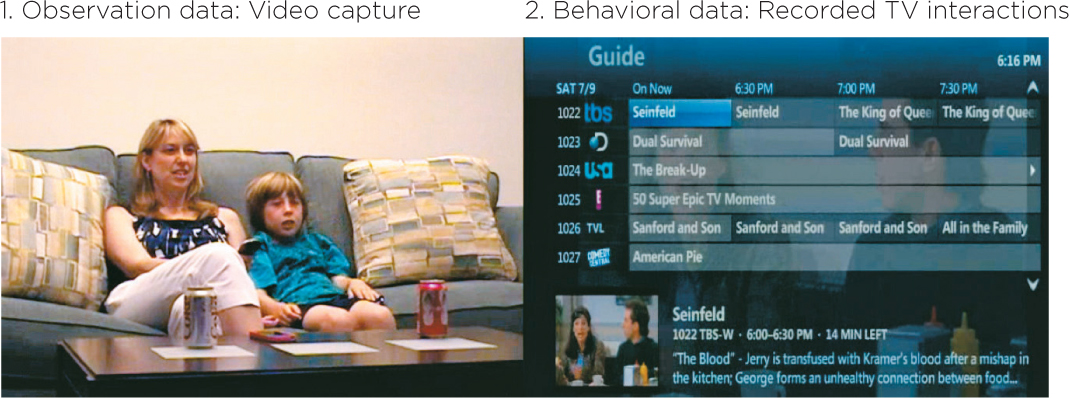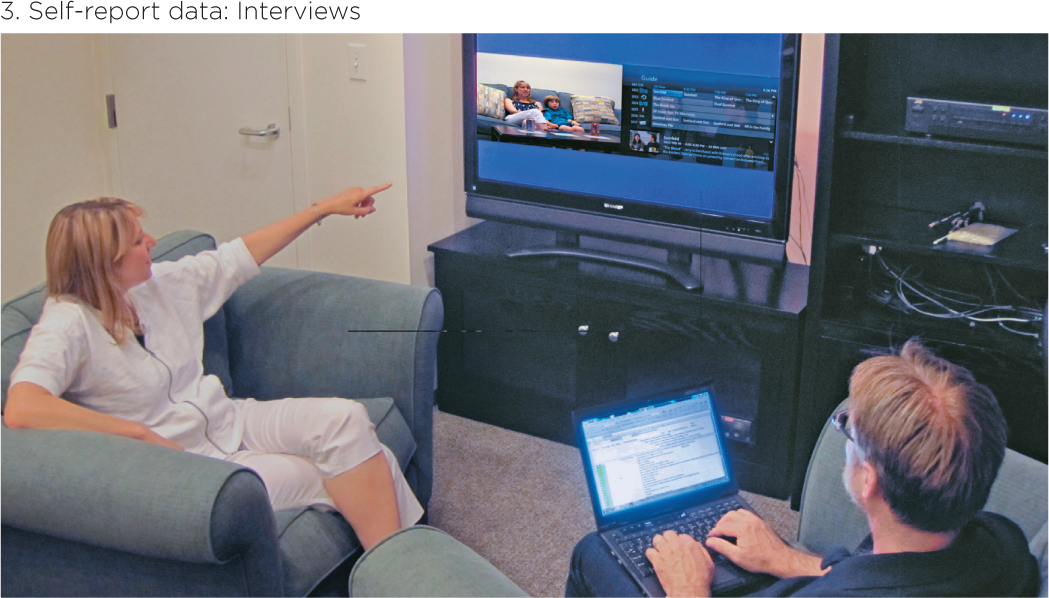115 | Triangulation |
The convergence of multiple methods on the same research question to corroborate evidence from several different angles
- Triangulation ensures accuracy of information by combining sources and mitigating the weaknesses of any single method or source.
- The most common occurrence of triangulation is to combine behavioral observation methods with self-report methods such as questionnaires or interviews.
- Self-reported behaviors or attitudes aligned with social norms or research expectations may be contradicted by actual behaviors observed.
- Triangulation may compare physiological data such as heart rate or pupil dilation with self-reported information or observations of visible behaviors.
- Anecdotal information collected through qualitative means can enrich and humanize the abstraction of quantitative results collected through survey data.
- In usability studies, recordings are triangulated across keystroke/mouse inputs, facial expressions, and actions verbalized in think-aloud protocol.
See alsoCompetitive Testing • Literature Reviews • Secondary Research
In a Microsoft study of television watching, observations and television interactions were used during interviews to correlate behaviors with TV content and events in the environment.

Courtesy of Mike Darnell, Microsoft Corporation.

..................Content has been hidden....................
You can't read the all page of ebook, please click here login for view all page.
